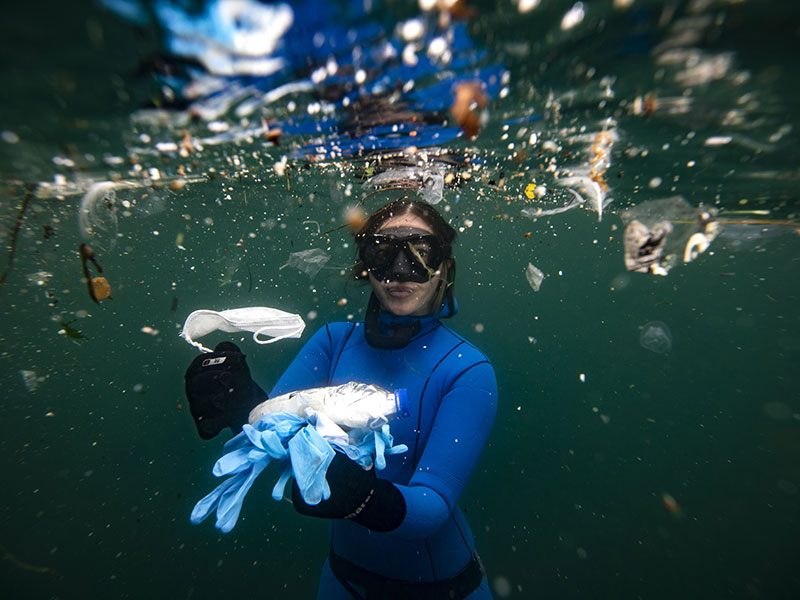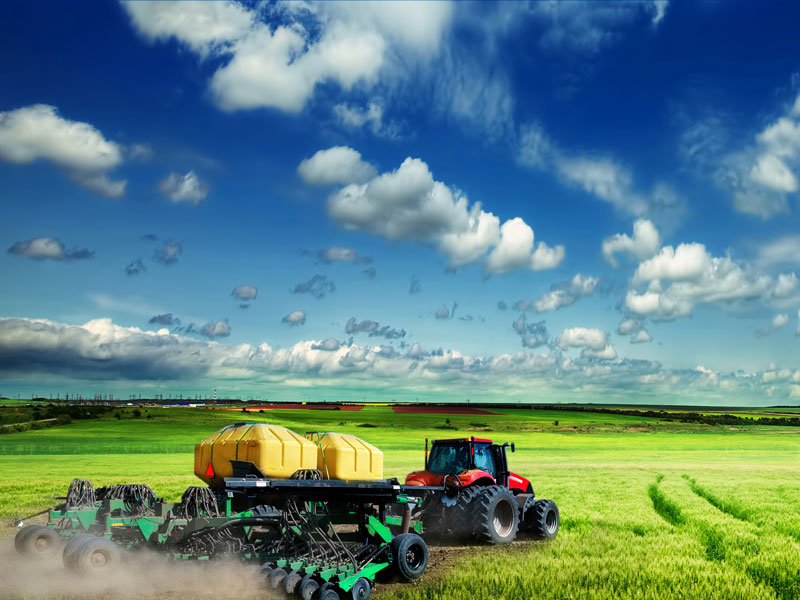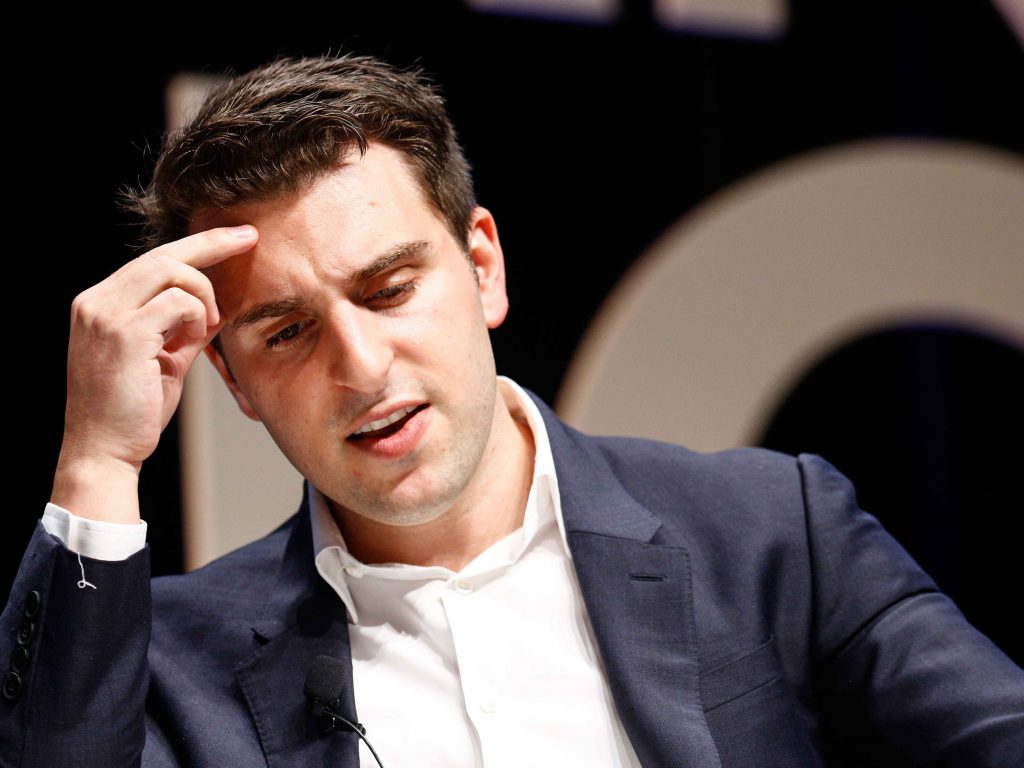Driving change through carbon mobilisation
The Danone group is implementing an approach to carbon emissions which combines economic, societal and environmental objectives. And Danone chose to focus on carbon to drive fast, radical and sustainable change at every level of its organisation
The Danone group is implementing an approach to carbon emissions which combines economic, societal and environmental objectives. And Danone chose to focus on carbon to drive fast, radical and sustainable change at every level of its organisation
In 1972, Antoine Riboud made this ground-breaking statement: “The company’s responsibility does not stop at the factory gates or the office door. Its action has repercussions throughout the whole community and influences the quality of life of each citizen. (…) Through the energy and raw materials that it consumes, through the nuisances that it generates, it gradually changes the appearance of our planet.” Today, under Antoine’s son Franck, Danone has translated this vision into an action plan to slash its carbon footprint by an ambitious 30 percent by kilo between 2008 and 2012 in each business line.
Nature at the root of Danone’s mission
Environmental responsibility is in Danone’s DNA, in two ways. Firstly, it is closely linked to its mission, “to bring health through food to as many people as possible”. As healthy food comes from healthy nature, to achieve this mission in the long run Danone needs to preserve and renew resources.
Environmental responsibility is also deeply rooted in Danone’s corporate culture based on dual commitment to business success and social progress. That is why Danone took early action to formalise and quantify commitments, recognising protection of resources as a strategic priority at the beginning of the 1990s and adopting an Environmental Charter in 1996. In 2000, Danone set precisely defined 10 years targets for limiting water and energy consumption and reducing waste and packaging. After achieving nearly all of those targets earlier in 2008, the group shifted up a gear and defined five priorities for action: reducing its carbon footprint, protecting water resources, stepping up packaging research to transform waste into a resource, promoting sustainable agriculture, and supporting biodiversity. Danone chose to begin by radically accelerating its efforts for the broadest indicator of environmental impact – carbon dioxide – and set the ambitious target of reducing its carbon footprint by 30 percent in kilos by 2012, taking into account not only its own direct impact and that of its factories but all the downstream stages in product life cycles. To facilitate deployment, Danone set up a Nature management department to coordinate, assess and promote action throughout the group.
Fighting climate change
Danone plans to reach its goal ≥ reducing our carbon footprint 30 percent by 2012 ≥ through progress in three areas: measuring its emissions reliably, reducing them, and implementing carbon offsets.
Reliable measurement
Reliable Measurement is an essential first step.
Danone has been working with experts at PricewaterhouseCoopers to develop a method to measure carbon emissions and allow results to be both reliably audited and included as a fundamental component of corporate reporting. The group can now measure emissions for its four businesses (Fresh Dairy Products, Waters, Baby and Medical Nutrition). The method was already approved for the Waters division and is now being assessed for certification by Ademe in France and the Carbon Trust in the UK. The aim is to generate audited carbon performance statements just as Danone produces audited financial statements. Looking beyond Danone, standardising measurement is an important issue, since it is the only way to ensure that all manufacturers speak the same language.
Second objective: Reducing emissions
In 2009, Danone achieved a 7.4 percent reduction of its carbon footprint when the target was of five percent. Momentum is set to continue with targets of 6.5 percent for 2010 and 30 percent by 2012, achieved through a comprehensive approach covering every stage in production.
At production plants, a highlight of the year was the creation of Danone Energy Campuses: meetings bringing together experts from factories around the world to develop standard-setting models for energy consumption compare these with actual performances and identify areas with room for improvement. In Fresh Dairy Products, this allowed Danone to reduce energy consumption by 11 percent. The Ochsenfurt factory in Germany made a particularly strong contribution with 47 best practices, most of them suggested by plant workers. The group is now studying deployment of these practices in over 20 sites worldwide, with a special focus on renewable energy sources, production of methane from waste, co-generation and geothermal energy.
In packaging, the main initiative for the Fresh Dairy Products division was the “Foam” project which consists in using a technology that injects air into plastic packaging to reduce density by 19 percent and CO2 content. In 2009, 40 production lines participated in the project, and as many as 110 lines will be able to use the technology by 2011. In 2009, the Water division launched the first bottles made entirely of recycled PET (R-PET) in Mexico, thanks to a ground-breaking technology that converts old bottles into new ones without generating any fresh waste along the way. Drawing on its successful partnership with PETstar, which supplies Bonafont with R-PET bottles in Mexico, Danone signed a contract with France Plastiques Recyclage to develop an R-PET factory in France to supply Evian Volvic Worldwide. In the long term, Danone’s objective is to produce 50 percent of bottles out of R-PET.
At Danone, concern for the environment extends beyond plants and products to include suppliers upstream and transport downstream. Because 85 percent of the emissions linked to its operations are indirect, working with suppliers is essential. The Danone Carbon Pact is a three-year action plan that helps its leading upstream partners measure and reduce emissions.
In 2009, Danone signed 20 agreements with top suppliers accounting for 40 percent of raw material and packaging purchases for Fresh Dairy Products, and it will be extending the programme to its other divisions in 2010.
Turning to transport, 2009 saw the implementation of a project which was adopted for bottled waters in the previous year, leading to a switch from road to rail for Volvic exported from France to Germany. The shift eliminated 26,000 truck deliveries, cutting carbon emissions by 30 percent, and business units in many other countries are now testing the programme.
Third step: Offsetting the carbon
However great its commitment and regardless of the efforts it makes, there will always be residual CO2 emissions that Danone simply cannot eliminate. In such cases, the group turns to carbon offsets to leverage the planet’s capacity to absorb emissions.
In this area, 2008 saw a major step forward with the creation of the Danone Fund for Nature in partnership with Ramsar and the IUCN and aiming at identifying and financing projects contributing to carbon absorption. In 2009, just six months after it became operational, Evian launched its first offset project with a programme for the restoration of mangroves in Senegal. Mangrove ecosystems are the planet’s richest sources of biomass. By offsetting the carbon remaining after a drastic slash plan, this programme will allow Evian to achieve its target of 50 percent carbon emissions reduction by 2011. Thanks to the fund’s money, the “Plant a Tree” campaign headed by the NGO Oceanium since 2006, was a major hit with more than 300 villages mobilised to replant 2,000 hectares (nearly 5,000 acres) or 36 million mangrove saplings. These aims are now an integral part of Danone’s business. Targets for reducing its carbon footprint are built into its management bonus system, which in turn has rallied employees as a whole to the cause. In the end, the challenge Danone faces in chasing the carbon is not just reducing its footprint, but effecting profound change in its practices to ensure that its future economic performance is lasting. Antoine Riboud was clear, “Public opinion is there to remind us of our responsibility.”
About farming
As Danone buys its milk from external suppliers, it cannot take all decisions on its own, but the group can develop partnerships with farmers and agricultural organisations and find ways to limit the environmental impact of its dairy business. Since 2004 Danone has worked with the French National Institute for Agricultural Research (INRA) and Vallorex, the flax-growers association, to demonstrate that adding flax to cattle feed significantly reduces methane emissions. In 2009 Danone’s France-based flax programme, dubbed Linus, was extended to Spain and the US. The group worked with the same partners to publish an article in the Journal of Dairy Science in 2009, demonstrating for the first time the links between certain amino-fatty acids and methane emissions. Measuring methane emissions from dairy herds – and thus better controlling them – could well become routine procedure in the near future.
Further information: www.downtoearth.danone.com













